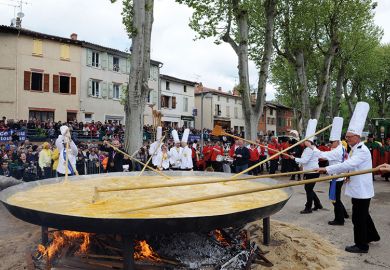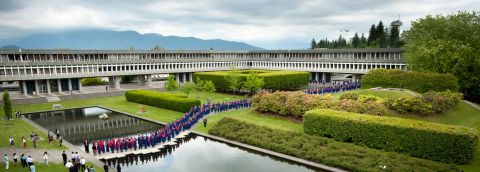“Visit almost any university in the land and you will find a small city bursting with Portakabins, scaffolding and cranes,” gibed The Spectator in 2016.
At many campuses, this feels like no exaggeration. Higher education has embarked upon an era of expansion unparalleled since the 1960s.
In a report published in October 2017, the Higher Education Funding Council for England recorded that the sector had spent £27.9 billion on improving its physical infrastructure since 2006.
It went on to forecast that a further £19.4 billion would be invested in the period 2016/17 to 2019/20, a 48 per cent increase on the previous four-year average.
What is this money being spent on? We take a brief look at some of the most pervasive master-planning trends that are currently shaping university estates.
Large-scale expansions
One of the most high-profile phenomena of the 21st-century higher education landscape is large-scale, large-budget expansion projects.
According to Hefce, half the UK sector’s projected expenditure in the period up to 2019/20 is accounted for by 18 institutions. In 2016, for example, UCL announced a £280 million loan – the biggest sum lent to a British university – to help finance its new East London campus. The trend is not limited to British institutions alone, though.
In simple terms, the trend belongs to the global growth of higher education. Strategically, however, many of the expansion projects are driven by the international focus on scientific and commercial innovation.
In New York City, then-major Michael Bloomberg’s 2010 initiative to reduce the metropolis’ dependency on the financial sector by developing an engineering and applied sciences campus in Manhattan came to fruition in 2017, with the completion of phase one of Cornell Tech, a five-hectare technology hub that fuses engineering with business.
The University of Manchester, meanwhile, is investing £350 million into a new engineering precinct, due for completion in 2021. In Ireland, Trinity College Dublin envisages that its planned Trinity Technology and Enterprise Campus will become the nucleus of Dublin’s drive to establish itself as a world player in innovation and entrepreneurship. The 2.2-hectare site will focus on industry collaborations, start-ups and knowledge transfer.
The trend for large-scale expansions is often linked to the perception of the university as a civic leader and economic engine. Many schemes are closely tied to urban regeneration, such as the University of Bristol’s plans (announced in 2016) to build a £300-million outpost at the epicentre of one of the UK’s largest urban regeneration projects.
Urbanity
As Bristol’s expansion illustrates, today’s universities are deliberately seeking closer integration with urban life. At no point has the institutional mission been so outwardly focused as it is today. The motives behind this are not solely civic-minded. Students and staff are increasingly looking for the vibrancy and amenities of urban life, with the consequence that the “city” has become a driving force in shaping the campus’ physical form.
Selected universities are densifying and activating suburban or remote campuses by creating large-scale, mixed-use developments as a means to secure the competitive edge. North America is at the vanguard of this trend.
In 2002, Simon Fraser University in British Columbia began construction on UniverCity, a residential community plus town centre sited immediately next to its primarily commuter academic core.
The University of Calgary followed suit in 2015, by commencing infrastructure for a compact, pedestrian-focused community mixing residential, retail and employment uses to the west of its suburban campus.
Furthermore, we are witnessing more and more examples of urban migration – institutions expanding from suburban bases into city-centre locations. Ulster University, for example, is building accommodation in central Belfast to replace its existing suburban facilities. The University of Tasmania plans to shift activities away from its suburban Newnham location to a city-based campus in Launceston.
Tasmania has lower rates of participation within higher education than other Australian states, and the university argues that a modern, accessible campus close to the CBD will attract both students and academics. Urban proximity can also bring practical benefits; proximity to local businesses, creative industries, health agencies or local government can lead to institutional partnerships.
Efficiency
However, in the overall picture of capital investment, grand relocation or large-scale master-planning projects are infrequent; they are simply beyond the resources of many universities. In this age of squeezed public funding and uncertainty about the future, universities are faced with doing more with less, and are contemplating future growth by looking within their existing landholdings to meet the needs of its users over the long term.
Universities are employing a trend that we call the “revitalising master plan”. These long-range planning exercises involve analysing the existing environment, identifying opportunities for refurbishment and infill construction and formulating implementation strategies. It is no new phenomenon, but the approach is gaining momentum and sophistication as universities strive to leverage value out of a campus and ensure that it supports institutional objectives through functionality, quality and identity. Monash University’s Clayton master plan is one such example. Over the past seven years, it has introduced a campus-wide walking network and new signage, built on underused car parks and retrofitted tired 1960s structures.
Cumulatively, the interventions have substantially improved Clayton’s piecemeal character and poor pedestrian experience. Such steps may not garner the headlines of Cornell Tech or UCL East but, very often, these types of physical transformations are a powerful mechanism for stimulating change in other directions.
Jonathan Coulson, Paul Roberts and Isabelle Taylor are co-authors of University Trends: Contemporary Campus Design, whose second edition is published by Routledge.
Register to continue
Why register?
- Registration is free and only takes a moment
- Once registered, you can read 3 articles a month
- Sign up for our newsletter
Subscribe
Or subscribe for unlimited access to:
- Unlimited access to news, views, insights & reviews
- Digital editions
- Digital access to THE’s university and college rankings analysis
Already registered or a current subscriber?








